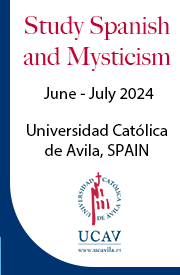What follows is a confession. I admit that I may have finally gone around the bend. Judge for yourself. But the soul has its seasons and unexpected turning points. And I came to one this past week.
Good reader, I have cancelled my subscription to The Washington Post. There, I’ve said it. I read it regularly for thirty years. But on Wednesday, it ran the same anti-Catholic ad by the Freedom From Religion Foundation that the New York Times published a few months ago, inviting people to leave the Church.
There’s been almost no reaction besides a few weak letters. But at least for me, it’s time to stop supporting institutions willing to take money from bigots aiming to encourage bigots for a bigoted, anti-Catholic cause.
I am not under any illusions that this will much matter to the Post. Boycotts have a long history. They rarely work. And it would depend on enough Catholics and others of good will ready to give it a serious try. There aren’t. Even the archdiocese of Washington and Cardinal Wuerl have remained silent.
And it may be unwise – even self-defeating – to cut yourself off from general sources of information. I’ve wrestled with this several times before. Why should I live a less engaged life because someone in New York, or the DC, or Boston is a smug bigot masquerading as tolerant and open-minded?
There’s no easy answer to this question, but it’s not going to go away – and will likely become more acute as now dominant social forces continue to gather momentum. You may want to stay engaged with this culture, especially if you believe it poses a threat to what you hold sacred. But at some point engagement turns into a degree of complicity.
The Post, by its own reporting, lost $22.6 million in the first quarter of 2012. And its print advertising fell by 17 percent. That may explain – though not excuse – why it’s willing to go bottom feeding for dollars. Circulation has decreased over 5 percent on Sunday and 10 percent on weekdays, one of the largest declines in American journalism. And this in a town that lives and dies by the news cycle.
Some people may draw grim satisfaction from these dire figures. They seem to say that, even without anti-Catholic outrages, fewer people are “buying” the Post’s line. Roughly the same thing has been happening to the New York Times, Boston Globe (owned by the Times), and other former liberal icons. But it’s not good when a primary source of news and information in a free society is evaporating, whatever the cause.
Still, where was the public objection fromthe Post’s liberal Catholics like E. J. Dionne, or conservatives friendly to religion like George Will and Michael Gerson? Don’t they care that they work for people willing to be openly involved with bigots?

Bigots aiming to encourage bigots for a bigoted, anti-Catholic cause.
It’s true that you can read a lot more online than in the past (the Post is available for free online – and I’ll read it while it is). But this is not yet, and probably never will be, a complete substitute for the kind of attention you can give to a paper that you can hold in your hands and scan carefully about local, national, and international news. In the Royal household, after only a few days, there are already complaints about mornings without the main paper.
Such choices hurt, no question. But what’s the alternative? The media are fond of reporting that significant majorities of Catholics don’t follow the teachings of the bishops. That’s quite true. But how did they get that way?
There was no little cowardice on the part of Catholic leaders over the last half century in the face of a declining culture. But fifty years ago, Archbishop Fulton Sheen and Billy Graham – among others – routinely appeared as columnists in secular papers. They were present in public and helped provide a cultural critique that is now routinely ridiculed as hate-filled, bigoted, and simplistic in those same papers.
The change came about, of course, because other elements in our culture also began to knuckle under to a new idea of society that passes through the state and seeks to eliminate family, church, other associations as somehow obstacles to tolerance and openness.
When you hear about people “bitterly clinging” to religion, guns, and their own values, what you are hearing is the voice of a smug progressivism with contempt for the people. It would be fine if that attitude had not taken over institutions from government agencies to the local kindergarten.
But it’s now everywhere and regards itself as the only conceivable public morality in our day. Do not be deceived. One way or another, whatever you do, it will touch you.
On June 1, Andy Garcia’s new film, For Greater Glory, will be released (it’s already appeared in Mexico). The official website offers a surprisingly frank summary: “A chronicle of the Cristeros War (1926-1929), which was touched off by a rebellion against the Mexican government’s attempt to secularize the country.”
Let’s pray that it doesn’t come to that here. In that heroic struggle, hundreds of thousands died, persecution and other injustices became a regular part of everyday life. You can read about it at a personal level in Graham Greene’s The Power and the Glory. I give an account of the whole thing in the first chapter of my Catholic Martyrs of the Twentieth Century. America, whatever we may think, is not exempt from human history.
The bigoted secularizers in America may seem to be winning. The forces of resistance appear weak to non-existent. It was that way under the Soviets too – but history can take sudden turns. Take a look sometime at Vaclav Havel’s essay “Living in Truth” if you want to see how small acts of resistance can bring down tyrants.
However desperate it all looks, the game is not over while there are still some willing to say: Viva Cristo Rey!















